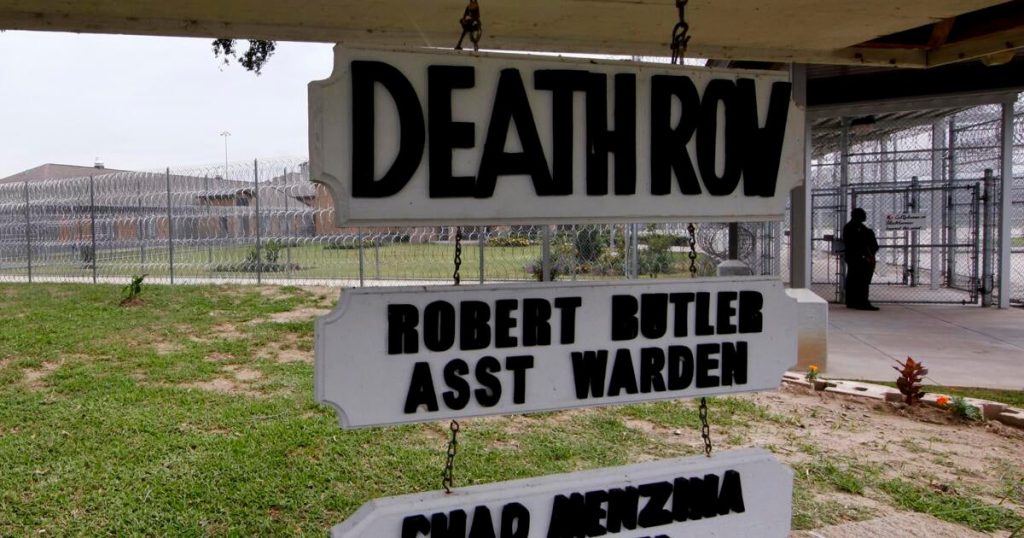The Tragic End of Christopher Sepulvado: A Life Spent on Death Row
Christopher Sepulvado, an 81-year-old terminally ill man, died on Saturday at the Louisiana State Penitentiary in Angola, Louisiana, just days before his scheduled execution by nitrogen gas. His death, attributed to natural causes stemming from pre-existing medical conditions, marked the end of a life spent in incarceration for a crime committed over three decades ago. Sepulvado was the oldest inmate on Louisiana’s death row, where he had languished for 31 years while the state grappled with the complexities of carrying out executions. His case has sparked intense debate about the morality and practicality of capital punishment, particularly in light of his advanced age and deteriorating health.
Sepulvado’s journey to death row began in 1992, when he was accused of killing his 6-year-old stepson. The boy had reportedly soiled his underwear after returning from school, leading Sepulvado to allegedly strike him on the head with a screwdriver and submerge him in scalding water. The gruesome nature of the crime shocked the community, and Sepulvado was convicted of first-degree murder in 1993, receiving the death penalty. Despite his lengthy incarceration, Sepulvado’s execution was repeatedly delayed, and he became a symbol of the slow-moving wheels of justice in Louisiana.
In recent years, Sepulvado’s health had significantly declined. His attorney, federal public defender Shawn Nolan, revealed that doctors had recently diagnosed him as terminally ill and recommended hospice care. Nolan described Sepulvado’s physical and cognitive decline as “significant,” painting a picture of a frail, elderly man far removed from the person who committed the tragic crime decades earlier. Despite his condition, Louisiana officials had scheduled Sepulvado’s execution for March 17, a decision that drew sharp criticism from Nolan and other advocates.
Louisiana’s Resumption of Executions: A Controversial Path
The decision to execute Sepulvado was part of Louisiana’s broader effort to resume carrying out death sentences after a 15-year hiatus. The state had paused executions due to a lack of political will and the difficulty of obtaining the drugs required for lethal injections. However, under the leadership of Republican Governor Jeff Landry, Louisiana moved to adopt a new execution protocol using nitrogen gas, a method that had been approved by the state legislature last year alongside electrocution.
The resumption of executions has been met with fierce opposition from death penalty opponents, who argue that the practice is inhumane and unjust. Nolan condemned the state’s plan to execute Sepulvado as “barbaric,” emphasizing the cruelty of strapping a dying, elderly man to a chair and forcing him to inhale toxic gas. His words underscored the ethical dilemmas surrounding capital punishment, particularly in cases involving aging inmates whose physical and mental conditions have deteriorated significantly over time.
Meanwhile, Louisiana Attorney General Liz Murrill took a different stance, asserting that “justice should have been delivered long ago” for Sepulvado’s heinous crime. Murrill expressed frustration that Sepulvado had not faced execution during his lifetime but noted that he would now face “ultimate judgment before God.” Her remarks highlight the tension between the legal system’s pursuit of retribution and the human reality of aging and mortality.
A Broader Look at the Death Penalty in Louisiana
Sepulvado’s case is not an isolated incident but part of a larger conversation about the death penalty in Louisiana. The state’s decision to resume executions has reignited debates about the morality, efficacy, and practicality of capital punishment. While some argue that it serves as a deterrent to crime and provides closure for victims’ families, others point to its disproportionate impact on marginalized communities and the risk of executing innocent people.
The use of nitrogen gas as an execution method has also raised eyebrows. Alabama became the first state to carry out an execution using this method last year, and Louisiana is now following suit. Proponents argue that nitrogen gas is a more humane alternative to lethal injection, as it causes rapid loss of consciousness. However, critics question the lack of scientific evidence supporting its safety and efficacy.
Sepulvado’s story also raises questions about the psychological and physical toll of prolonged incarceration on death row. Spend decades in limbo, awaiting execution, can have devastating effects on a person’s mental and physical health. In Sepulvado’s case, his advanced age and terminal illness made his continued incarceration and planned execution particularly controversial.
The Legal and Ethical Debate Continues
As Louisiana moves forward with its execution plans, legal challenges are likely to persist. Another death row inmate, Jessie Hoffman, who was scheduled to be executed on March 18, has reignited a lawsuit challenging the state’s lethal injection protocol as cruel and unusual punishment. A federal judge recently reopened the case, highlighting the ongoing legal hurdles faced by the state in carrying out executions.
Sepulvado’s death has also brought attention to the broader issue of aging inmates on death row. As the years pass, many death row inmates experience significant physical and cognitive decline, raising questions about their fitness for execution. Advocates argue that executing elderly inmates who are no longer the same person who committed the crime decades ago serves no practical purpose and violates basic human dignity.
In the wake of Sepulvado’s death, his attorney Shawn Nolan called for a reexamination of Louisiana’s approach to the death penalty. “The idea that















